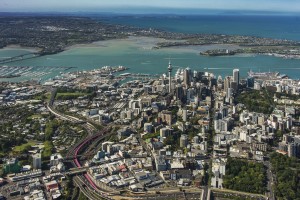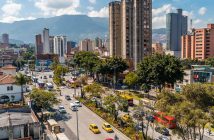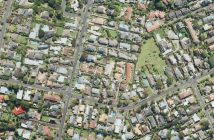A step change in infrastructure funding and investment will be required to ensure Auckland networks can accommodate the 34,500 news homes the government has promised over the next decade, says Infrastructure New Zealand Chief Executive Stephen Selwood
“Auckland is in immediate need of housing and today’s announcement is a serious commitment to addressing prolonged undersupply,” he observes.
“Last year only around 7,000 homes were built in the region, so an extra 3,500 per annum over the next decade is substantial.
“The construction of 13,500 social housing units where 8,300 currently stand represents a major increase in housing for those in chronic need.
“The other 20,000 the government intends to build will be targeted at the more affordable end of the spectrum, which has for many years been under-supplied.
“This is very good news, but Auckland’s infrastructure networks cannot accommodate this development by continuing business as usual.
“A 34,500 home development is a city of 100,000 people – that’s somewhere between a Palmerston North and a Dunedin.
“A vast service network underpins this much housing; Palmerston North City alone has over 550km of roads, 1,000km of water pipes and 30 schools.
“The government estimates that 34,500 homes is equivalent to three and a half houses on every street in Auckland.”
Typically, that means an additional seven cars in every street, Selwood notes.
“Already Auckland’s transport networks are bursting at the seams and all projections are that congestion will get much worse.
“The government earlier this month signalled it was going to come to the party with an $11 billion commitment to infrastructure through Budget 2017, but it is still not clear how the Auckland Council will meet its growth obligations.
“A 2015 study by the Centre for International Economics on the cost of residential infrastructure estimated that a new home built on redeveloped land costs the Auckland Council on average $30,000.
“This figure excludes big city-shaping investments like the City Rail Link.
“The government’s announcement adds a $1 billion bill to a council which is already at the limit of what it can borrow.
“If new development triggers the need for regional scale infrastructure like light rail or a new busway, the cost to the Auckland Council will easily be two, three or four times this figure.”
The city really is at a “critical juncture”, Selwood insists.
Infrastructure is urgently needed to address the backlog and accommodate new growth.
“Obvious steps to addressing this challenge are:
- prioritise housing development next to train and busway stations
- invest in traffic light optimisation and intelligent traffic management systems
- rapidly develop park-and-ride facilities
- streamline planning consents for power, water, telecommunications and social infrastructure that support the developments
- recycle capital tied up in existing assets into new infrastructure
- enable urban development agencies to rezone, acquire and aggregate land and use the increased value to fund infrastructure
- expand private investment in infrastructure through PPPs and large scale development opportunities
- introduce road pricing sooner rather than later to both manage demand and generate revenue to pay for transport infrastructure
“It’s great to see the government enabling housing development at scale but parallel development of infrastructure to support all of the new houses will be key to success,” Selwood says.




